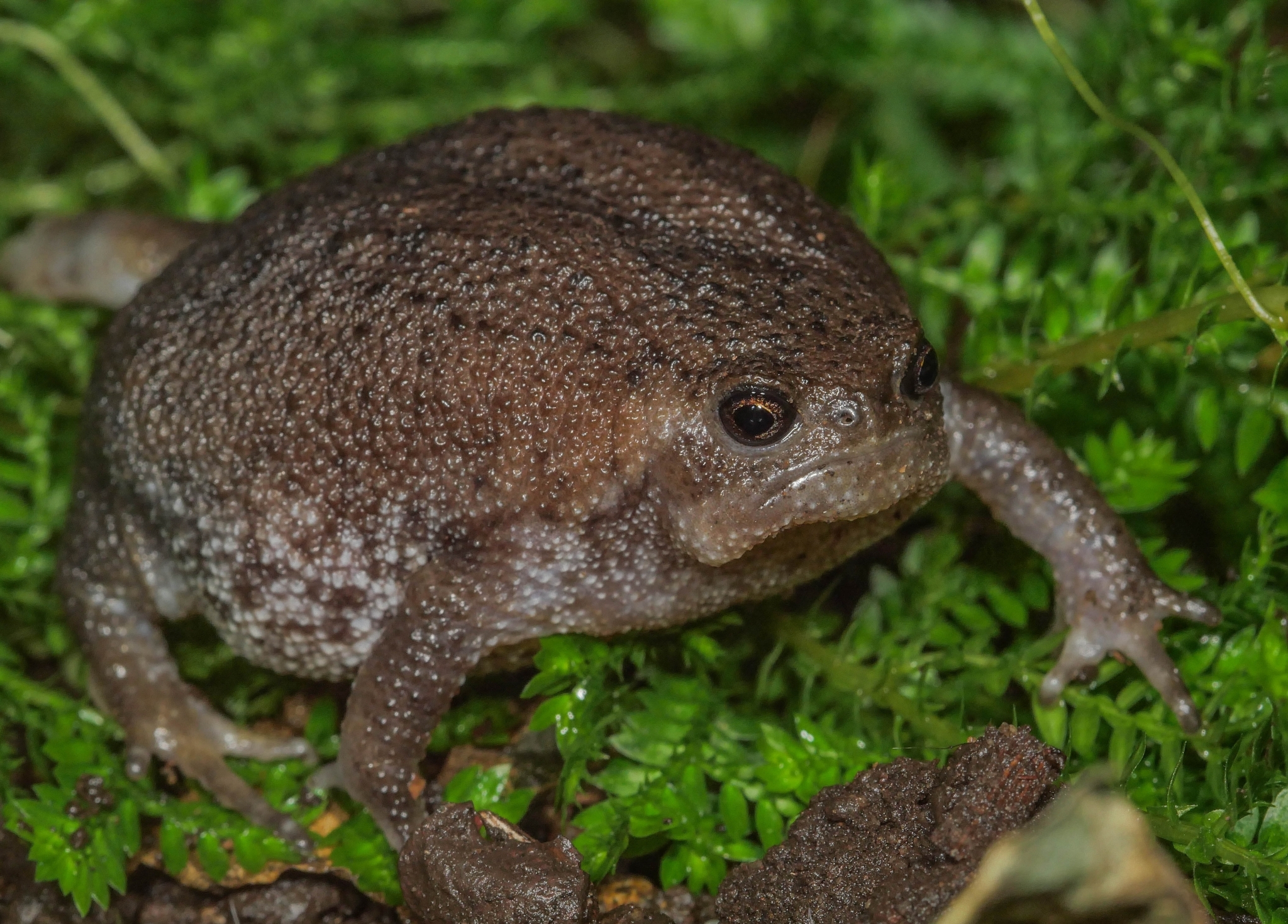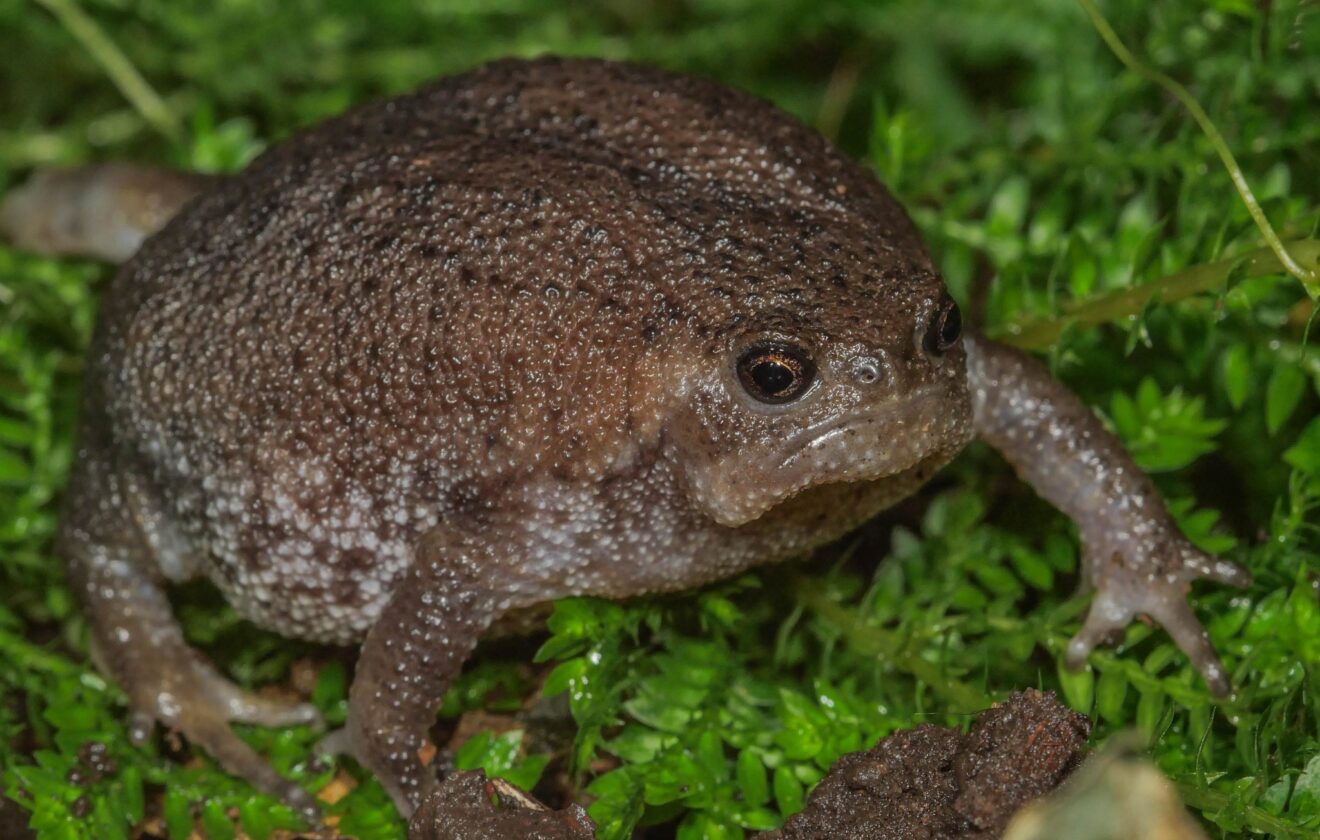Unearthing the Hidden Wonders of Breviceps verrucosus: The Warty Rain Frog of Southern Africa#
Deep within the moist leaf litter of southern Africa’s mist-shrouded coastal forests, beneath hidden layers of moss and foliage, thrives one of the continent’s most extraordinary amphibians—the Warty Rain Frog, scientifically known as Breviceps verrucosus. Unassuming at first glance, this unique frog species possesses traits and behaviors that fascinate and charm every observer lucky enough to encounter it.
Named for its distinctive warty skin texture—a feature often evoking curiosity and delight rather than aversion—Breviceps verrucosus captivates biologists and nature enthusiasts alike. Despite their humble appearance and elusive nature, these frogs play integral roles in their ecosystems, demonstrating remarkable adaptations that help them thrive in challenging environments.
Taxonomy and Classification#
Belonging to the family Brevicipitidae, commonly known as Rain Frogs, Breviceps verrucosus is one of the more distinctive members of the genus Breviceps. The genus name is a direct reflection of their shortened, robust bodies (“brevi-” meaning short, and “-ceps” meaning head), ideal for their burrowing lifestyles. Researchers recognize approximately 20 species within the genus, all of which demonstrate fascinating physiological adaptations tailored to their distinct habitats.
Breviceps verrucosus shares close evolutionary lineage with other rain frogs such as Breviceps adspersus, the common rain frog, and Breviceps fuscus, also native to southern regions of Africa. While closely related, each species within the genus occupies specialized ecological niches, adapting uniquely to specific habitat conditions.
Natural Habitat#
Geographical Range and Distribution#
The Warty Rain Frog predominantly inhabits the coastal forests and mountainous regions of southern Africa, primarily within South Africa, Swaziland, and Mozambique. Thriving in humid, misty environments, these amphibians favor the leaf-littered forest floors and deeply shaded woodland habitats where moisture remains constant year-round.
Within South Africa, these frogs frequent parts of Eastern Cape and KwaZulu-Natal provinces, regions renowned for their rich biodiversity and exuberant subtropical forest patches. Here, beneath layers of decomposing leaves, fallen branches, and moss-covered logs, they carve out humble burrows and live discreet yet impactful lives.
Habitat Preferences and Ecological Adaptations#
Preferring cool, damp environments with abundant moisture, Breviceps verrucosus thrive beneath dense understory vegetation and shaded forest canopies. Their burrowing behavior is a significant adaptation, allowing them to maintain skin moisture vital for respiration and thermoregulation. By remaining underground or hidden in leaf litter during the hottest, driest parts of the day, these little amphibians avoid desiccation and predation.
The rain frogs’ specialized forelimbs, with strong, spatulate toes and toughened snouts, efficiently tackle the digging required for their subterranean homes. This archaeological aptitude, alongside their compact, rounded body shape, makes them experts in soil excavation and underground living.
Physical Characteristics#
Morphologically distinctive, the Warty Rain Frog seldom exceeds a modest 40mm in length. Its round, bulbous body appears slightly comical at first glance, with notably shortened limbs and a disproportionately large head relative to body size. These physical characteristics resonate with amphibian enthusiasts who often appreciate their somewhat exaggerated and endearing features.
The most defining characteristic, however, remains its “warty,” granular skin texture. Although not true warts, these skin protrusions—scientifically identified as verrucae—inspired the frog’s specific scientific epithet, “verrucosus.” Their coloration reflects an earthy palette of browns, greens, grays, and occasional subtle yellows, perfectly camouflaging them amidst the forest’s leaf-strewn floor.
Large, expressive eyes protrude slightly from the flattened head, aiding in nocturnal ambush predation. The skin texture and coloration form highly effective camouflage, exceedingly useful in evading predators and surprising unsuspecting prey.
Behavior and Life Cycle#
Nocturnal Activities and Feeding Habits#
Breviceps verrucosus is predominantly nocturnal, emerging from its leafy or subterranean hideaways after dark to hunt for food. The frog feeds primarily on small invertebrates such as spiders, beetles, termites, and ants, actively contributing to insect population control within its habitat.
Prey capture typically involves a patient, motionless stance followed by sudden strikes propelled by powerful but short-reaching limbs. The frog’s sticky tongue, designed to swiftly immobilize prey, serves this feeding methodology through efficient capture mechanisms.
Mating, Reproduction, and Parental Care#
Rain frogs differ from typical amphibian reproductive practices through their unique terrestrial egg-laying habits. During rainy periods, males produce distinctive, deep-bellied mating calls—tremulous, buzzing sounds—to advertize availability and attract females. Remarkably, their calls often originate beneath the soil’s surface, echoing softly through the earth and vegetation, adding an almost mystical element to these frogs’ secretive lifestyles.
After an elaborate courtship sometimes involving gentle nudging and behavioral rituals, females lay eggs in specially dug underground chambers rather than open water. What’s strikingly unusual in their reproductive biology is that Breviceps verrucosus bypass the typical free-swimming tadpole phase, developing entirely within their eggs underground. Juvenile frogs emerge fully formed, miniature replicas of adults, ready to navigate terrestrial life immediately upon hatching.
This reproductive strategy grants the Warty Rain Frog immense ecological advantages—it reduces vulnerability to aquatic predators and allows occupation of forested habitats lacking permanent water bodies.
Ecological Role and Importance#
The Warty Rain Frog fulfills multiple essential ecological roles. As an efficient insectivore, it serves as a substantial biological control agent, keeping populations of potentially damaging insects in check. Simultaneously, it contributes significantly to local food chains, providing prey for larger predators including nocturnal birds, small mammals, and snakes, thus participating in maintaining balanced and healthy ecosystem dynamics.
Moreover, amphibians like Breviceps verrucosus often serve as bioindicators, organisms highly sensitive to environmental disturbances or pollutants. Their presence or absence helps scientists gauge ecosystem health and detect early signs of environmental degradation.
Threats and Conservation Status#
Current Population and Threat Assessment#
While currently listed as Least Concern by the International Union for Conservation of Nature (IUCN), Breviceps verrucosus still faces localized threats primarily driven by habitat loss, deforestation, agricultural expansion, and urbanization in certain regions. Climate change presents additional challenges through altered rainfall patterns affecting habitat quality and availability of suitable breeding conditions.
Public Awareness and Conservation Initiatives#
Fortunately, various conservation initiatives aim to protect this remarkable species’ habitats, notably through wildlife reserves and protected forestry areas in its native geographic range. Public education and community-driven habitat restoration projects also play crucial roles in safeguarding the habitats essential for the frog’s continued survival.
Cultural and Scientific Significance#
Indigenous communities in southern African regions often regard amphibians, including rain frogs, as significant cultural symbols, viewed variously as harbingers of seasonal change or indicators of environmental well-being.
Scientifically, the frog’s adaptations—including terrestrial egg-laying and direct embryonic development—provide valuable insights into evolutionary biology. These findings inspire research across various fields, advancing our understanding of adaptation, niche specialization, and amphibian biology amidst global environmental change.
Conclusion#
Hidden beneath soil and shadows, the Warty Rain Frog, Breviceps verrucosus, embodies an ecological miracle often overlooked in the intricacies of biodiversity. Its remarkable adaptations—from subterranean breeding, vibrant camouflaged coloration, and unique physiology—highlight the extraordinary ways in which evolution shapes life on Earth.
As we delve deeper into understanding and preserving such species, audiences everywhere play crucial roles through awareness, conservation action, storytelling, and advocacy. By supporting habitat preservation and amplifying the stories of lesser-known but ecologically pivotal species like Breviceps verrucosus, we collectively nurture a brighter future for our rich global tapestry of wildlife.














